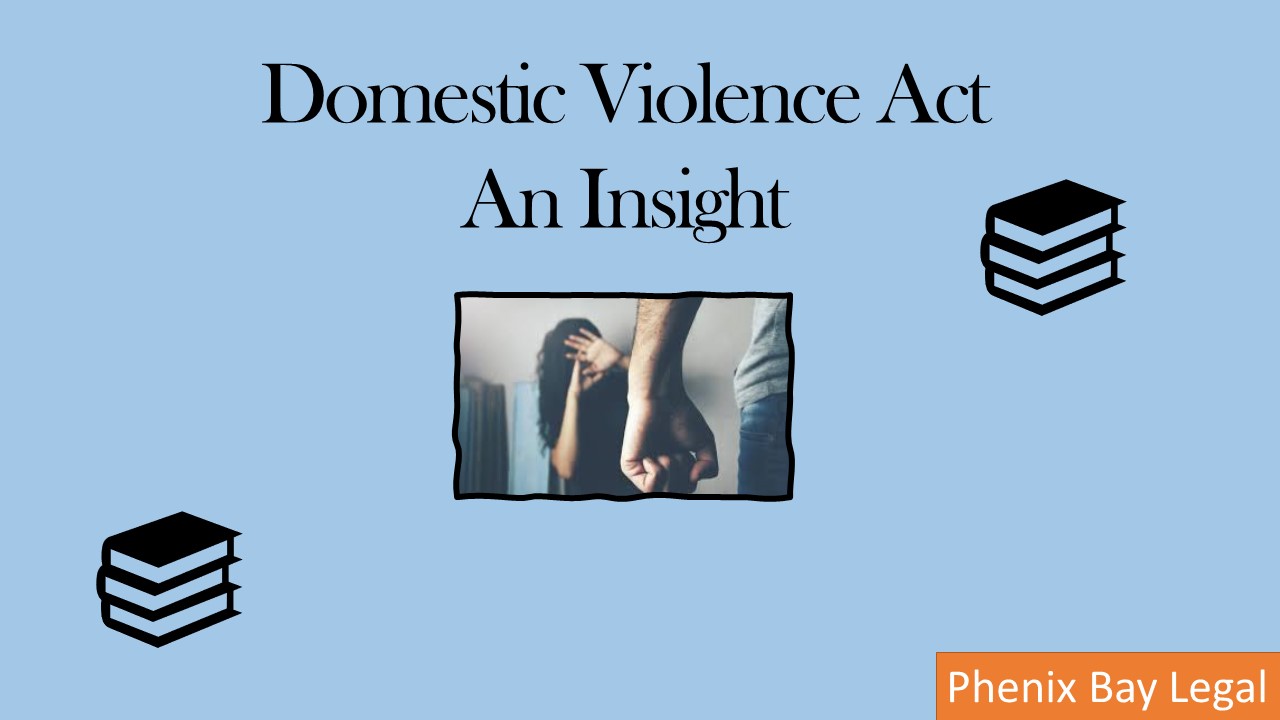
A Comprehensive Guide to the Protection of Women from Domestic Violence Act, 2005
The Protection of Women from Domestic Violence Act, 2005 (PWDVA), is one of India’s landmark pieces of legislation aimed at safeguarding women from domestic violence. Domestic violence is a pervasive issue worldwide, and in India, it has long been rooted in social, economic, and cultural factors that disadvantage women. The Act seeks to provide immediate relief, protection, and justice to women facing abuse within domestic settings, going beyond criminal penalties to offer a wide range of civil remedies.
A Comprehensive Guide to the Protection of Women from Domestic Violence Act, 2005
The Protection of Women from Domestic Violence Act, 2005 (PWDVA), is one of India’s landmark pieces of legislation aimed at safeguarding women from domestic violence. Domestic violence is a pervasive issue worldwide, and in India, it has long been rooted in social, economic, and cultural factors that disadvantage women. The Act seeks to provide immediate relief, protection, and justice to women facing abuse within domestic settings, going beyond criminal penalties to offer a wide range of civil remedies.
In this article, we’ll explore the origins, scope, and impact of the PWDVA, 2005. We will discuss the legal provisions, protection mechanisms, and rights provided under the Act. We will also examine its implementation, challenges, and effectiveness over time.
Introduction to the Protection of Women from Domestic Violence Act, 2005
The Protection of Women from Domestic Violence Act was enacted by the Indian Parliament and came into effect on October 26, 2006. It was introduced to address the inadequacies in the legal framework that failed to effectively protect women from violence in domestic settings. The law aims to provide quicker, non-punitive relief and protection orders to the victims while also ensuring that abusers are held accountable.
Domestic violence in the context of the Act refers not just to physical violence but also emotional, verbal, sexual, and economic abuse, making the law far-reaching in its scope. It extends its protection to women who are or have been in a domestic relationship with the abuser, covering not just married women but also mothers, daughters, sisters, and live-in partners.
Historical Background: The Need for Legislation
Before the enactment of the PWDVA, Indian law primarily addressed domestic violence through Section 498A of the Indian Penal Code, which deals with cruelty by husbands and their relatives. However, Section 498A was primarily a criminal provision, limited to cases of cruelty related to dowry demands, and provided for punishment of the offender rather than immediate relief to the victim.
The need for a civil law that provided immediate protection and remedies for women, including residence rights and monetary relief, was keenly felt. NGOs, women’s rights activists, and the United Nations Convention on the Elimination of All Forms of Discrimination Against Women (CEDAW) played crucial roles in pushing for comprehensive legislation. The enactment of the PWDVA was seen as a progressive step toward recognizing domestic violence as a serious human rights violation and providing remedies that address the needs of victims in real-time.
Legal Framework of the Act
- Definition of Domestic Violence
One of the key features of the PWDVA is its broad and inclusive definition of domestic violence. Under Section 3, domestic violence is defined as any act, omission, or commission that:
- Harms or injures the health, safety, life, limb, or well-being (whether mental or physical) of a woman.
- Causes harassment, harm, injury, or coercion to meet unlawful demands for dowry or other property.
- Includes emotional, verbal, or psychological abuse, such as insults, name-calling, or repeated threats.
- Encompasses sexual abuse, such as coercing the woman into sexual acts against her will.
- Covers economic abuse, such as denying financial resources, disposing of assets, or restricting access to financial resources.
This comprehensive definition enables women to seek protection for a variety of abuses, not limited to physical violence.
- Who Can Seek Relief?
The Act is designed to protect "aggrieved persons," which includes any woman who is, or has been, in a domestic relationship with the abuser and who is subjected to any form of domestic violence. A domestic relationship, as per the Act, covers:
- Relationships by blood, marriage, or adoption.
- Women in live-in relationships or in relationships that resemble marriage.
- Women living together with their in-laws, parents, or extended families.
This broad definition ensures that the law applies not only to married women but also to other familial or domestic arrangements.
- Who Can Be Accused?
The accused, or "respondent," under the Act, refers to any male adult who is, or has been, in a domestic relationship with the aggrieved woman. In some cases, the Act also allows for complaints to be filed against female relatives of the male abuser (e.g., mother-in-law, sister-in-law) if they are involved in the abuse.
- Reliefs Available Under the Act
The PWDVA provides for a wide range of civil remedies, which can be sought through a simple application to a Magistrate. The key reliefs include:
- Protection Orders (Section 18): The court can issue protection orders that prohibit the abuser from committing any act of domestic violence, contacting the victim, or coming near her residence or place of work.
- Residence Orders (Section 19): This ensures that the aggrieved woman cannot be evicted from the shared household. The court may also direct the respondent to secure alternative accommodation for the victim.
- Monetary Relief (Section 20): The court may direct the respondent to pay compensation for medical expenses, loss of earnings, maintenance, or other expenses incurred by the woman due to the violence.
- Custody Orders (Section 21): Temporary custody of children may be granted to the aggrieved woman, ensuring that the safety and well-being of the children are protected.
- Compensation Orders (Section 22): The court may direct the abuser to pay compensation for the injuries or damages, including physical and mental suffering.
- Role of Protection Officers
One of the most critical mechanisms for the implementation of the Act is the appointment of Protection Officers by the state government. These officers assist the victims in filing complaints, ensuring that their rights are protected, and helping them access necessary services such as medical aid, legal aid, shelter, or counseling.Protection Officers are pivotal in bridging the gap between the victims and the legal system, helping to streamline the process and ensure the safety of the aggrieved woman.
- Duties of Police, Service Providers, and Magistrates
The Act also outlines the duties of various authorities involved in the enforcement process:
- Police Officers: Upon receiving a complaint of domestic violence, police officers are duty-bound to inform the woman of her right to apply for protection and provide necessary assistance.
- Service Providers: NGOs or institutions recognized as service providers under the Act offer shelter, medical facilities, or counseling to victims.
- Magistrates: Courts play a vital role in providing fast-track justice by issuing orders and ensuring timely hearings and relief for the victims.
Implementation and Challenges
While the PWDVA has been hailed as progressive legislation, its implementation has faced several challenges, including:
- Lack of Awareness:
Many women are still unaware of the provisions under the Act. Even when aware, social and cultural stigmas often prevent women from reporting domestic violence or seeking help from legal authorities.
- Inadequate Infrastructure:
Protection Officers, shelters, and service providers are essential for the law’s implementation, but in many parts of the country, these facilities are either inadequate or inefficient. The lack of proper training for Protection Officers and police officers also hampers the effective enforcement of the law.
- Delays in Judicial Proceedings:
While the law aims to provide speedy remedies, overburdened courts often lead to delays in the issuance of protection orders or other reliefs, leaving victims in prolonged vulnerable situations.
- Economic Dependence:
Many victims of domestic violence remain financially dependent on their abusers, which makes it difficult for them to leave abusive households or seek redress. Although the Act provides for monetary relief, the enforcement of these orders can be challenging, especially when the abuser refuses to comply.
Case Studies: Understanding the Act in Practice
- Hiral P. Harsora vs Kusum Narottamdas Harsora (2016)
This case was a landmark judgment wherein the Supreme Court of India struck down the provision that restricted the definition of "respondent" to adult male members. The court expanded the definition, allowing women to file complaints against female relatives, such as mothers-in-law, who may also be perpetrators of domestic violence.
- Aruna Parmod Shah vs Union of India (2008)
In this case, the court upheld the constitutionality of the PWDVA, emphasizing that the Act was aimed at protecting women’s rights and fulfilling India's commitments under international conventions like CEDAW. The judgment reinforced the notion that the Act serves as an essential tool to safeguard women from violence within the private sphere.
Recent Developments and Amendments
Over the years, there have been several discussions regarding the effectiveness of the PWDVA, and certain amendments have been proposed to strengthen its implementation. For instance:
- The Ministry of Women and Child Development has worked on expanding awareness campaigns about domestic violence and the Act.
- Discussions are ongoing to improve the functioning of Protection Officers and better fund shelters and service providers.
- The Supreme Court and high courts have periodically issued guidelines to ensure that judicial officers handle domestic violence cases sensitively and expeditiously.
Conclusion
The Protection of Women from Domestic Violence Act, 2005, is a crucial piece of legislation that seeks to address one of society’s most pressing issues: violence against women in their own homes. Its broad definition of domestic violence, inclusive nature, and range of civil remedies have made it a powerful tool for women to fight abuse.However, while the law is progressive in its intentions, its effectiveness depends heavily on robust implementation, awareness campaigns, and the active participation of law enforcement agencies. As Indian society continues to evolve, there remains hope that the PWDVA will not only protect women but also change societal attitudes towards domestic violence, creating a safer environment for women across the country. In conclusion, the PWDVA represents both a legal and cultural shift in how domestic violence is addressed, empowering women to seek justice and live lives free from abuse. But to truly fulfill its promise, the law must be supported by continued vigilance, awareness, and improvements in infrastructure and enforcement mechanisms.
Phenix Bay Legal Provides curated Formats of all Legal and Corporate Documents. Take Subscription to access all documents. Subscription Plans
- #DomesticViolence
- #ProtectionOfWomen
- #LegalRights
- #WomensRights
- #IndianLaw
- #DomesticViolenceAct
- #PWDVA2005
- #ViolenceAgainstWomen
- #WomensSafety
- #GenderJustice
- #CivilLaw
- #LegalProtection
- #IndianLegislation
- #IndianWomen
- #JusticeForWomen
- #WomensEmpowerment
- #HumanRights
- #FamilyLaw
- #LegalAwareness
- #IndianCourt
### Relating to Awareness and Action:
- #EndDomesticViolence
- #StopViolenceAgainstWomen
- #WomensSafetyFirst
- #KnowYourRights
- #ProtectWomen
- #WomenInLaw
- #LegalAid
- #SayNoToViolence
- #BreakTheSilence
- #SpeakOut
- #SupportSurvivors
- #EmpowerWomen
More >>

Jyoti Sharma vs. Vishnu Goyal & Anr. 2025 INSC 1099
This was a long running legal battle between a landlord and her tenants over a shop. The landlord, Jyoti Sharma, wanted her shop back for two main reasons: The tenants had stopped paying rent. She needed the shop to expand her family's business (her bonafide need).
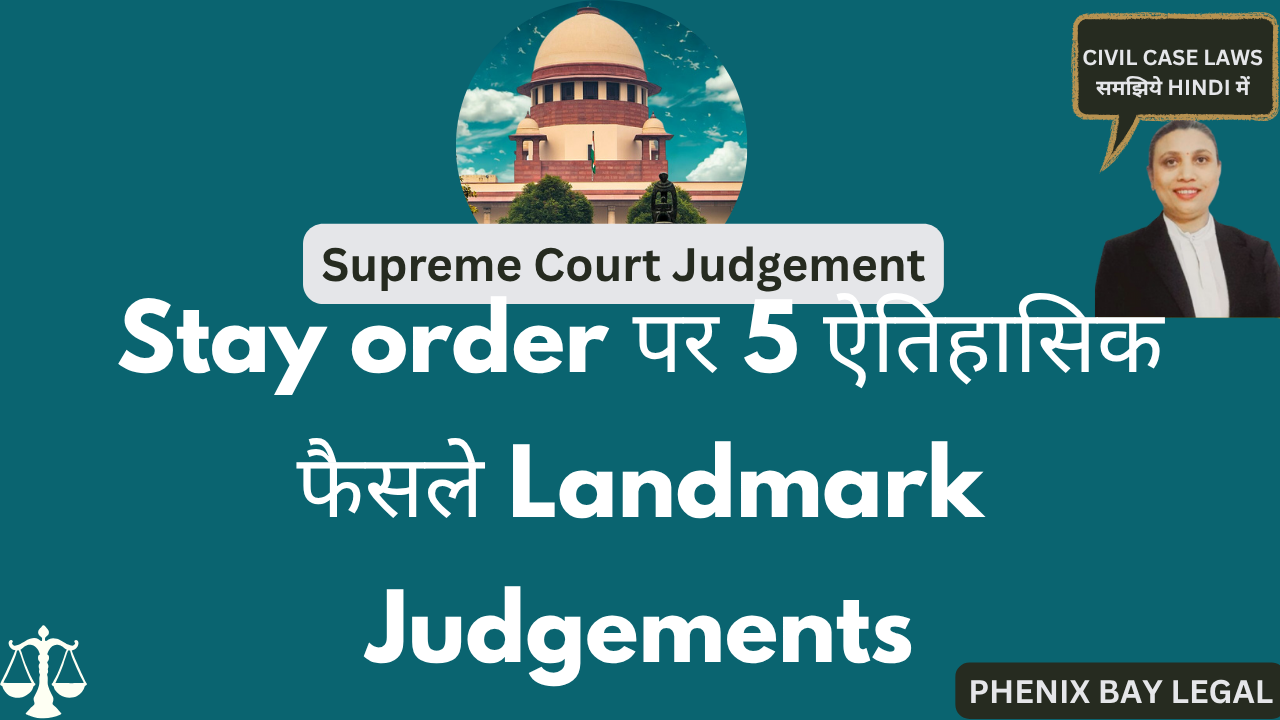
Landmark Judgement on Injunction
In civil, commercial, or even family disputes. But when is a simple injunction suit enough? When do you need to add a declaration of title? And how do courts balance urgency vs evidence in interim relief?
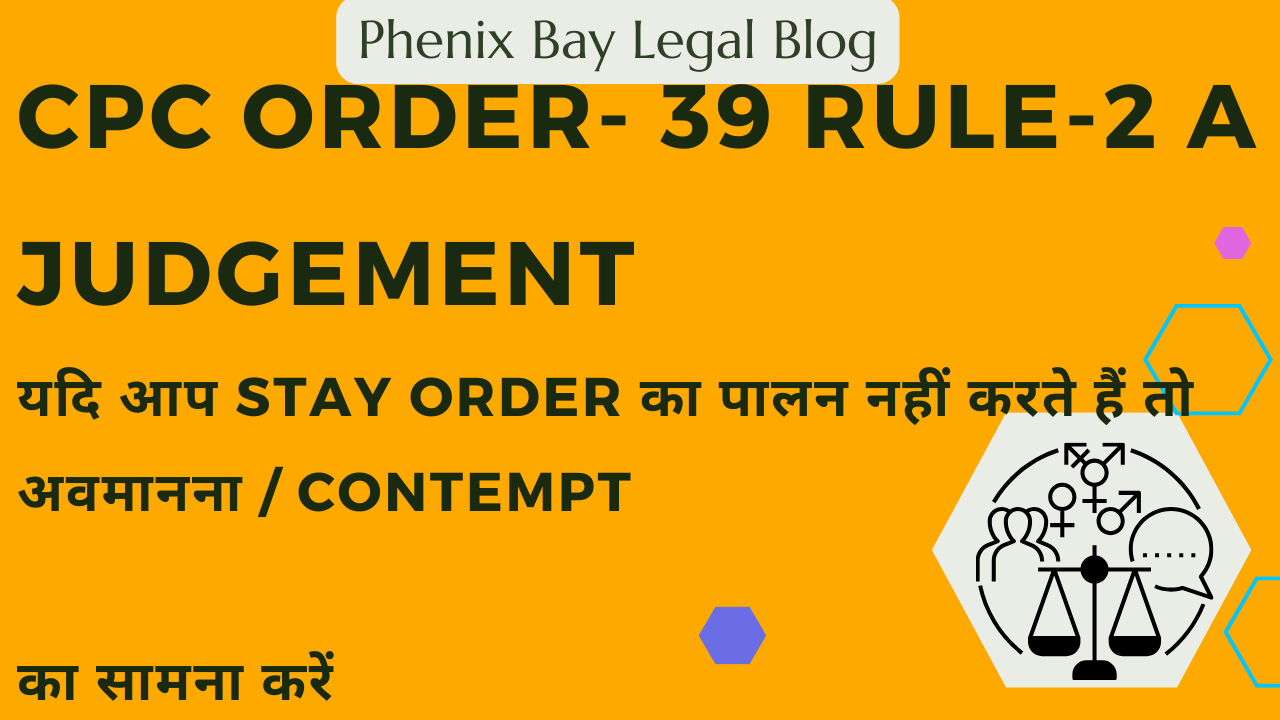
Case Analysis: Stay Order Violation and Contempt of Court by Supreme Court of India
Giving an undertaking to the court is equivalent to an order of injunction—any violation invites contempt proceedings.Injunction orders remain valid until formally vacated by a court—violation before vacation can lead to punishment.
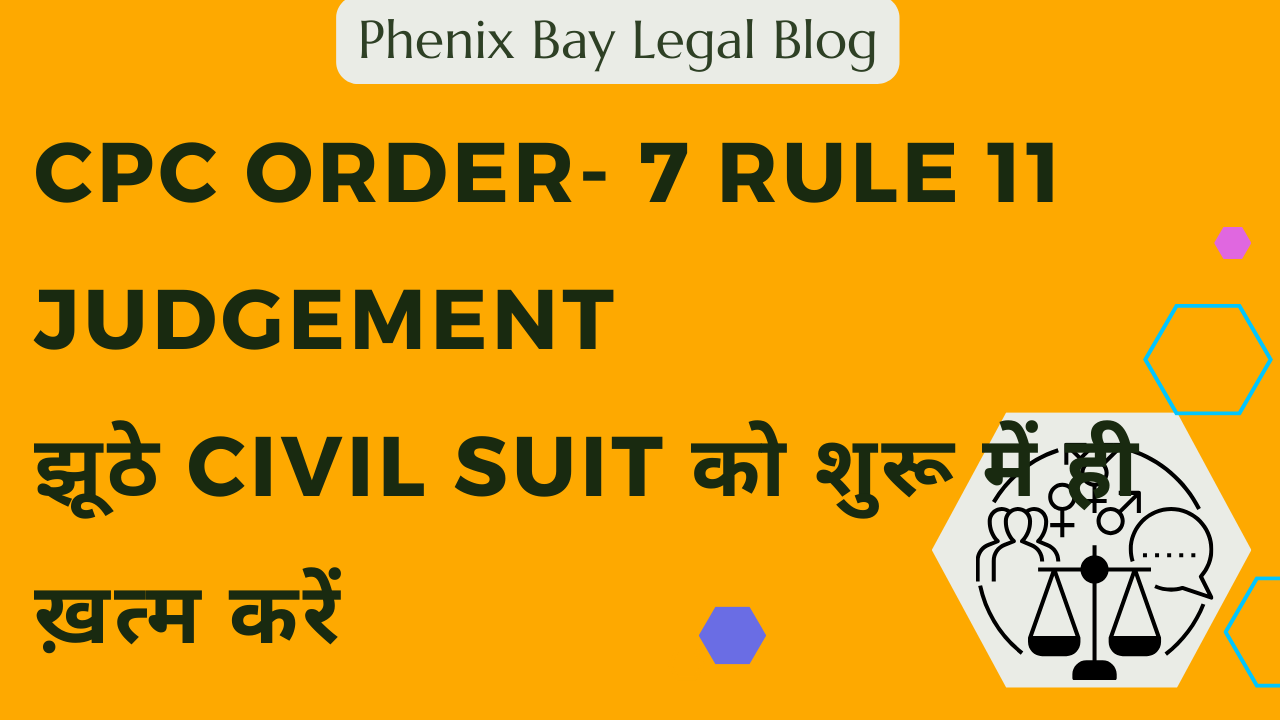
Order 7 Rule 11 of CPC Explanation in Land Mark Judgement
The Sopan Sukhdeo Sable judgment is a landmark ruling that reinforces Order 7 Rule 11 of CPC as a safeguard against frivolous and legally untenable claims. It highlights the importance of examining only the plaint’s contents to decide whether a suit should be dismissed at the threshold.

CPC Order- Order 14 to 20 Explanation IMPORTANT CASE LAWS +MCQ’S for Judiciary Exam Preparation
CPC Order- Order 14 to 20 Explanation IMPORTANT CASE LAWS +MCQ’S for Judiciary Exam Preparation
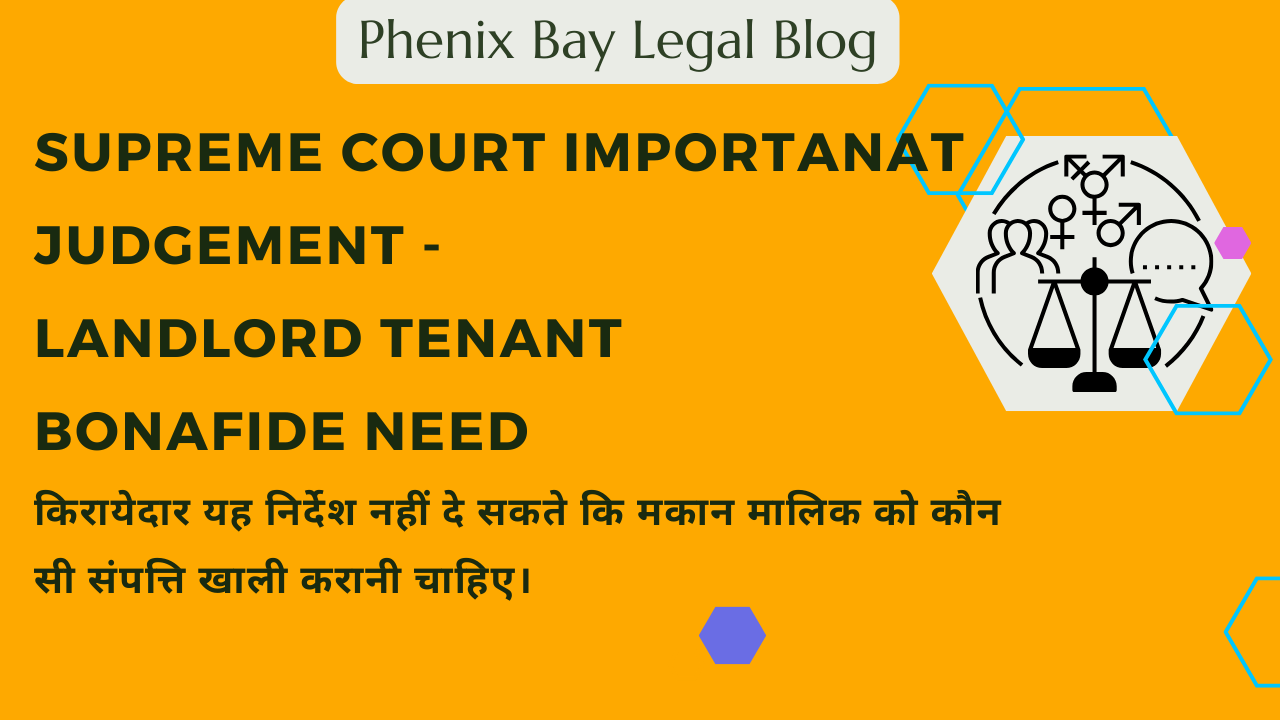
Supreme Court ImportanatJudgement - Landlord Tenant Bonafide need
This case involves a dispute over eviction of a tenant based on the bona fide need of the landlord. The Supreme Court ruled in favor of the landlord, reversing the High Court's decision. Below is a detailed breakdown of the judgment with relevant legal principles, precedents, and reasoning.